Most people know this song, but if you don't then this will be a real treat for you! It's a fantastically fun and catchy song that was written and performer originally by Johnny Nash. Later on, artist Jimmy Cliff recorded a cover version which became the huge hit most of us know of today.
So for this lesson, we will be learning Jimmy Cliffs version. We will be playing it in the original key.
I sing it a full octave below and add a capo on the second fret of my guitar so it's not too low.
So get ready for some fun! We’re going to start out with an easy version and then move on to a more challenging one that features a middle section with more complex chords.
But feel free to stick with the easy version, if that is more your speed right now- that's perfectly fine!
Song Structure And Chords
The verse of I Can See Clearly Now features three easy chords: D, G, and A. The verse mostly remains in the key of D and then jumps to a C chord for what I call the chorus chord and back to the key of D.
Let's start mapping out the song.
The chord order is D, G, D, D, D, G, A, A. Then we go on to D, G, D, D, C, G, D, D. Finally, it ends with C, G, D.
In this part I’m only strumming downward once at the beginning of each bar.
Each chord lasts one bar or four beats, and you can think of the entire section we just mapped as the first package of a verse-chorus form.
The second verse-chorus package is the same as the first and then we go on to the bridge.
Introducing the Bridge
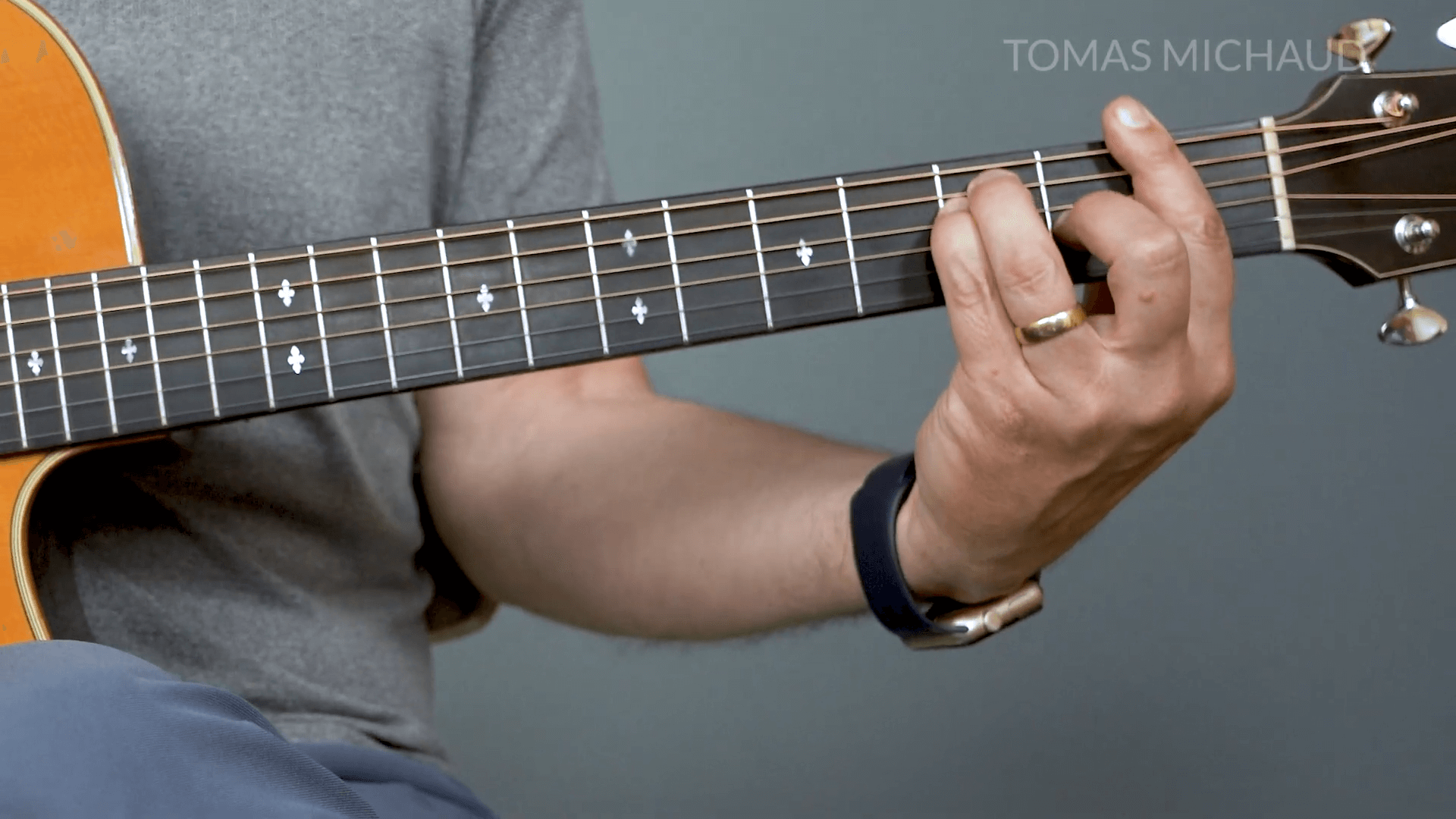
The bridge features an F chord. I like to do a barred F, which is easy once you have it. Of course, if you can’t play it yet, then it is not easy.
In that case, you can try making a non-barre F. You do that by making a C chord and adding the pinky right below the third finger, in the fourth string third fret, and moving the second finger to the third string, second fret. Pick whichever F chord you feel most comfortable with.
The bridge chords are F, F, C, C, F, F, A, A. Now if you’re doing the easy version, you go right back to the verse after these bridge chords. However, if you’re doing the more challenging version, there is an interlude here.
Time For Strumming
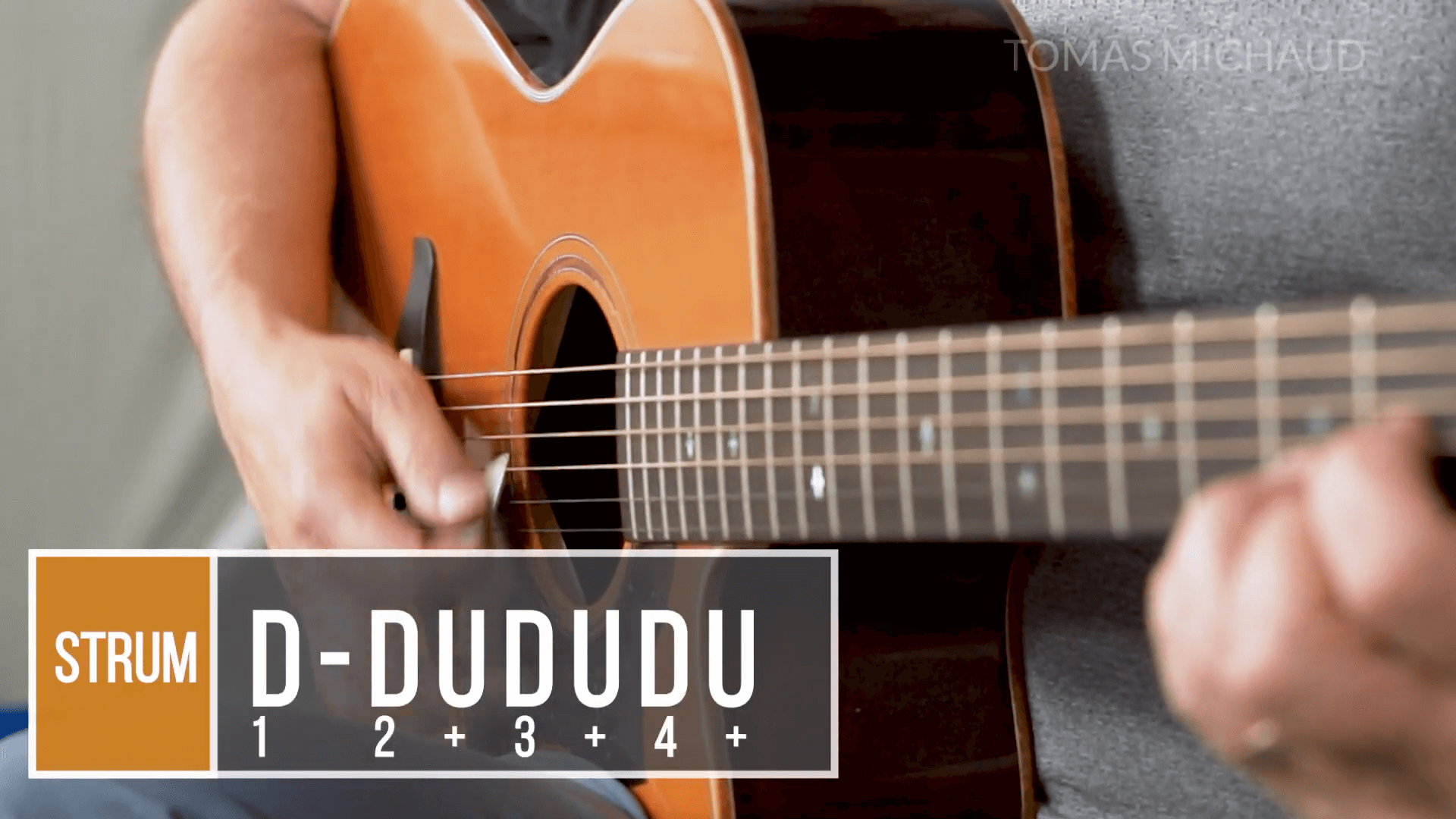
I’m going to break down the strum pattern into three stages. You can use the stage you’re comfortable with and mix them up to add some variety.
The basic version is D - D U D U D U. This basic version is stage one and it is a viable strum for I Can See Clearly Now.
Let’s Do The Rake Strum
For stage two we’re going to add a rake strum. Basically, a rake is when you cross the strings in a slower fashion so you can hear each one more clearly, as opposed to striking them at once.
To accomplish this you need to anticipate the beginning of the strum just a bit. We’re going to place that rake strum on beat two of the bar.
Add A Mute And Palm
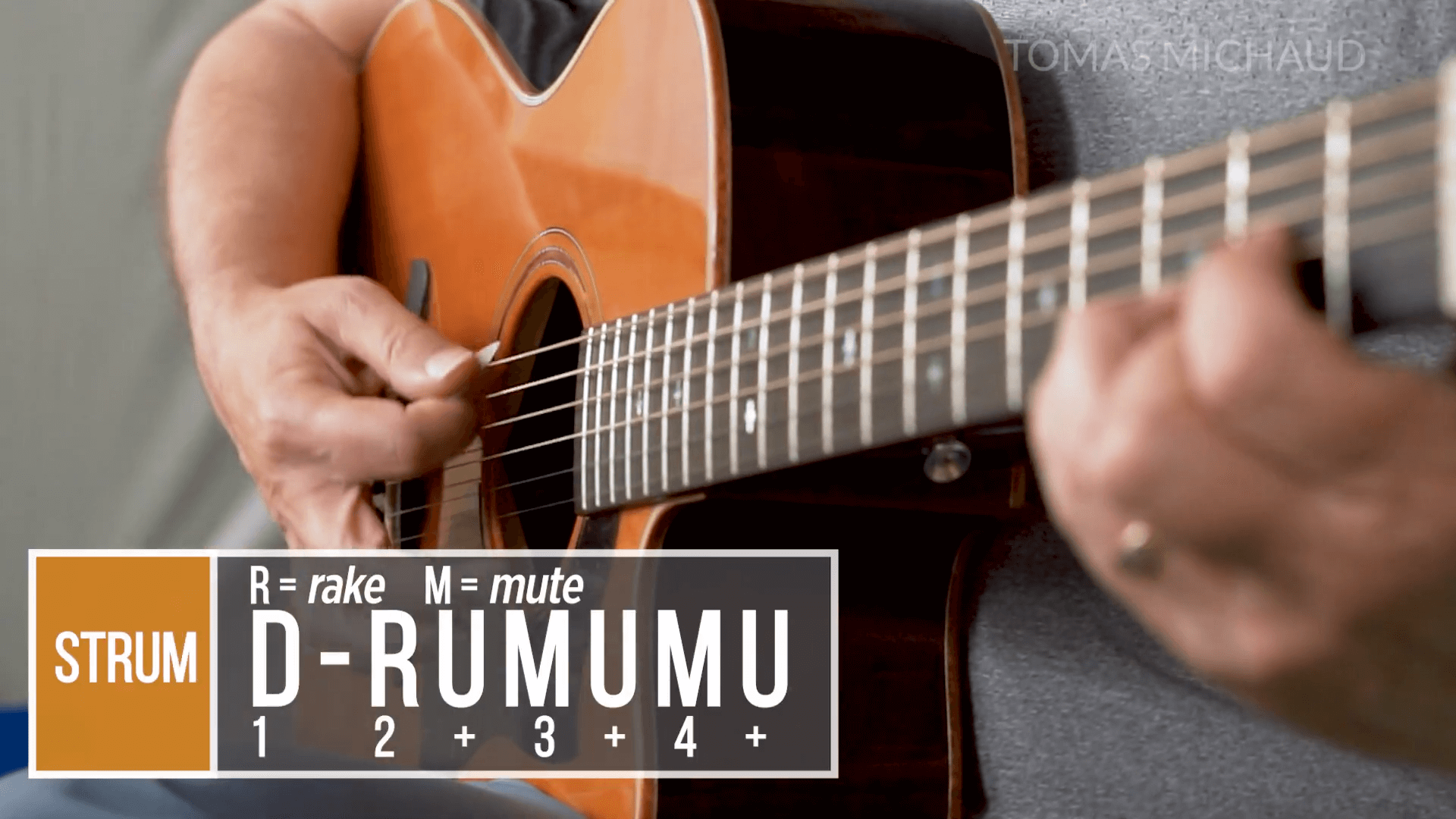
For the final strum stage, we’re going to add a mute and palm the bridge.
You’re going to strum down with the side of your right hand muting the strings by pressing them right past the bridge.
That pattern is D - R U M U M U. You can stick with this one or mix and match and see what feels good to you.
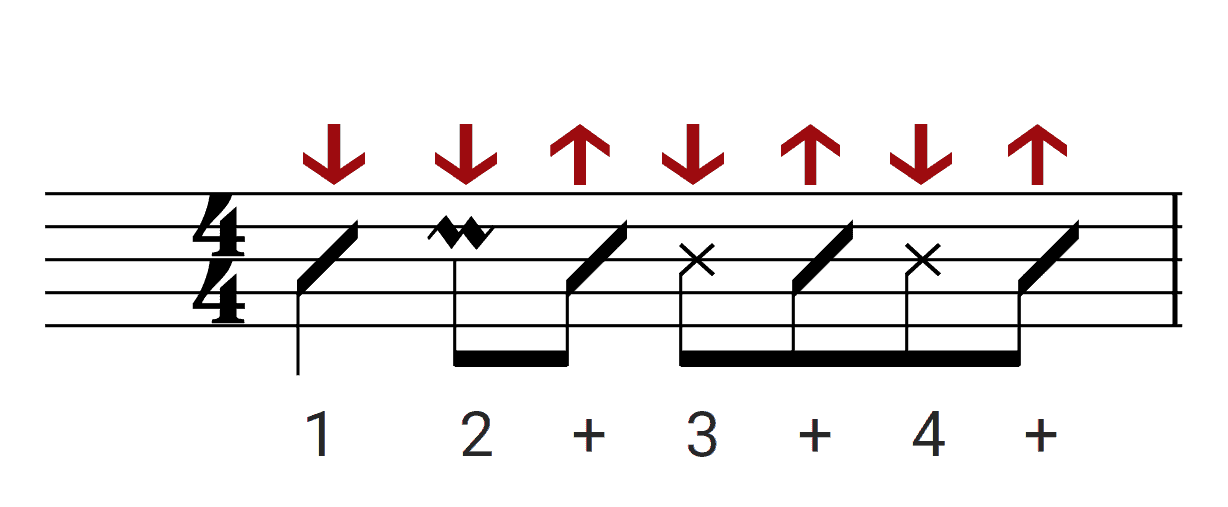
Don’t Forget the Middle Section
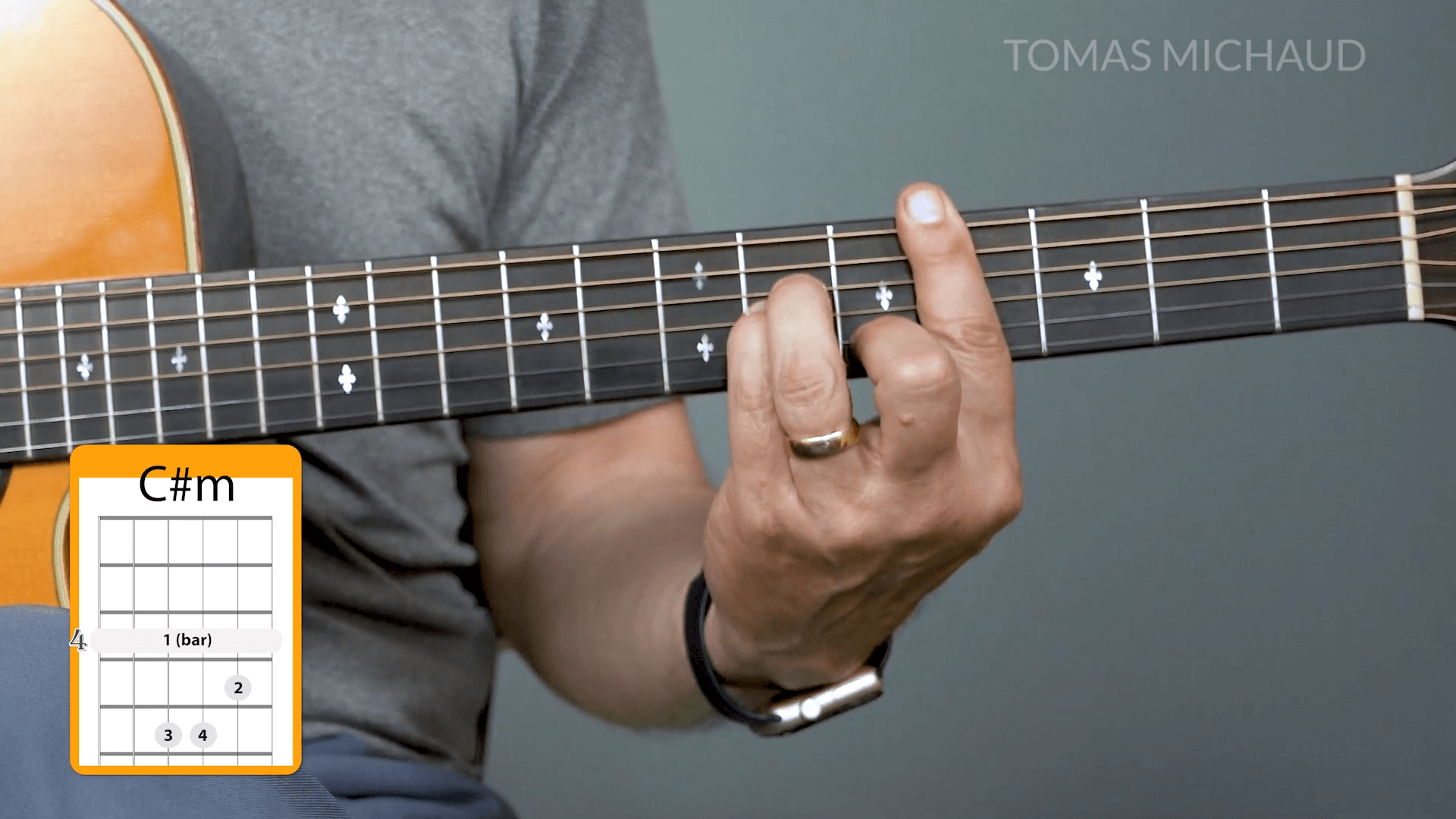
For those of you that want to try the more challenging version, we’re going to take it right from the end of the bridge.
This middle section starts on the A chord and features some barred chords that might be challenging for some of you.
The chords here are A, C#m (on the fourth fret, starting with the fifth string down), G (barred), C#min, G, C, D6, and A.
For the C#min chord, bar your index finger on the fourth fret and then add an Amin shape next to the bar. That means you place your middle finger on the fifth fret second string, ring finger on the fourth string sixth fret, and the pinky on the third string, fifth fret.
For the G, place your index on a bar on the third fret and do an E chord shape with the remaining finger.
For the D6, simply finger a standard D chord and then remove the ring finger to let the B string ring open.
Conclusion
The I Can See Clearly Now chord lesson lets you go at your own speed. You can choose to do it with the easy version if that is what you are most comfortable with.
However, the challenging version is a great chance to work on some bar chords and add an interesting strum as well.
